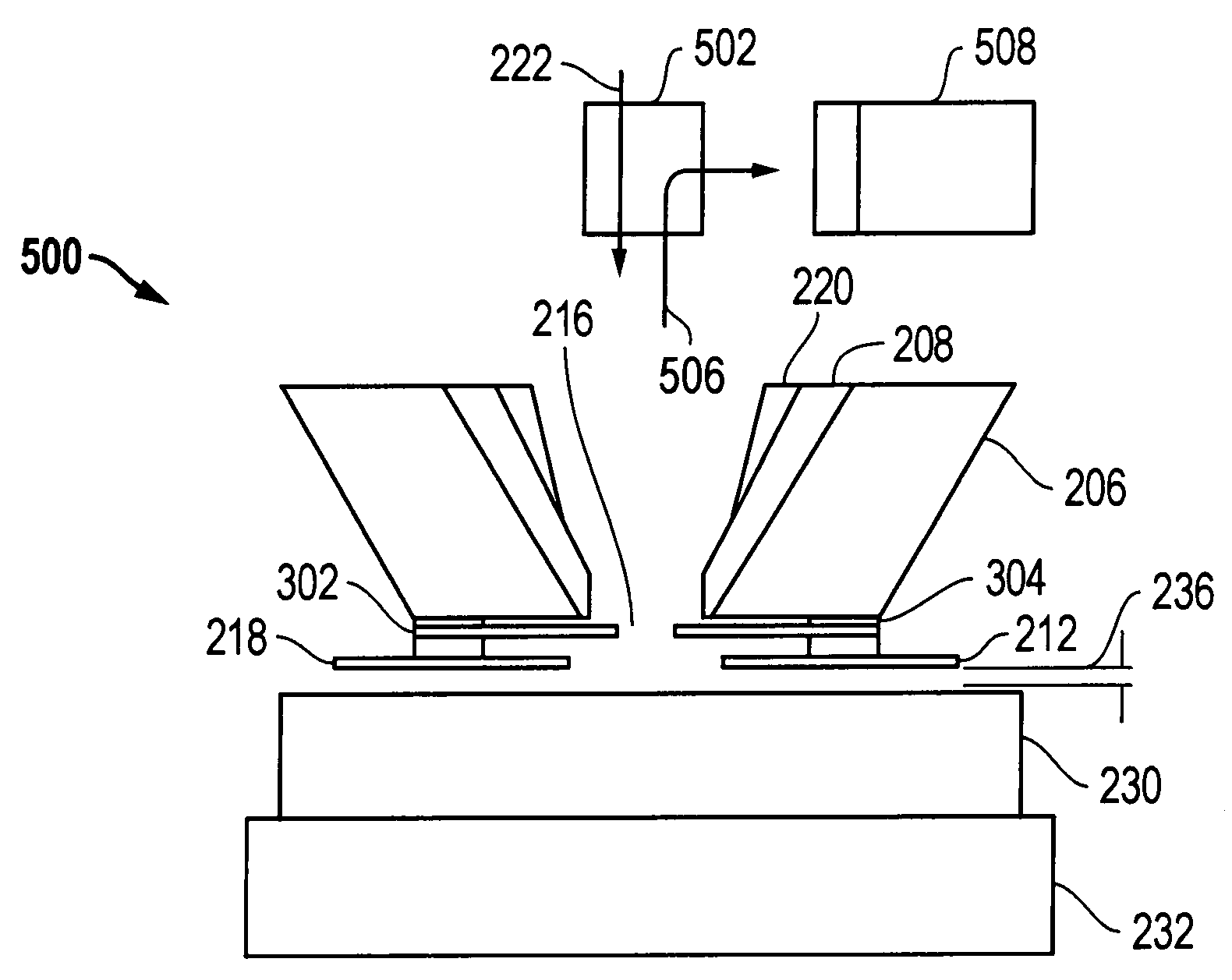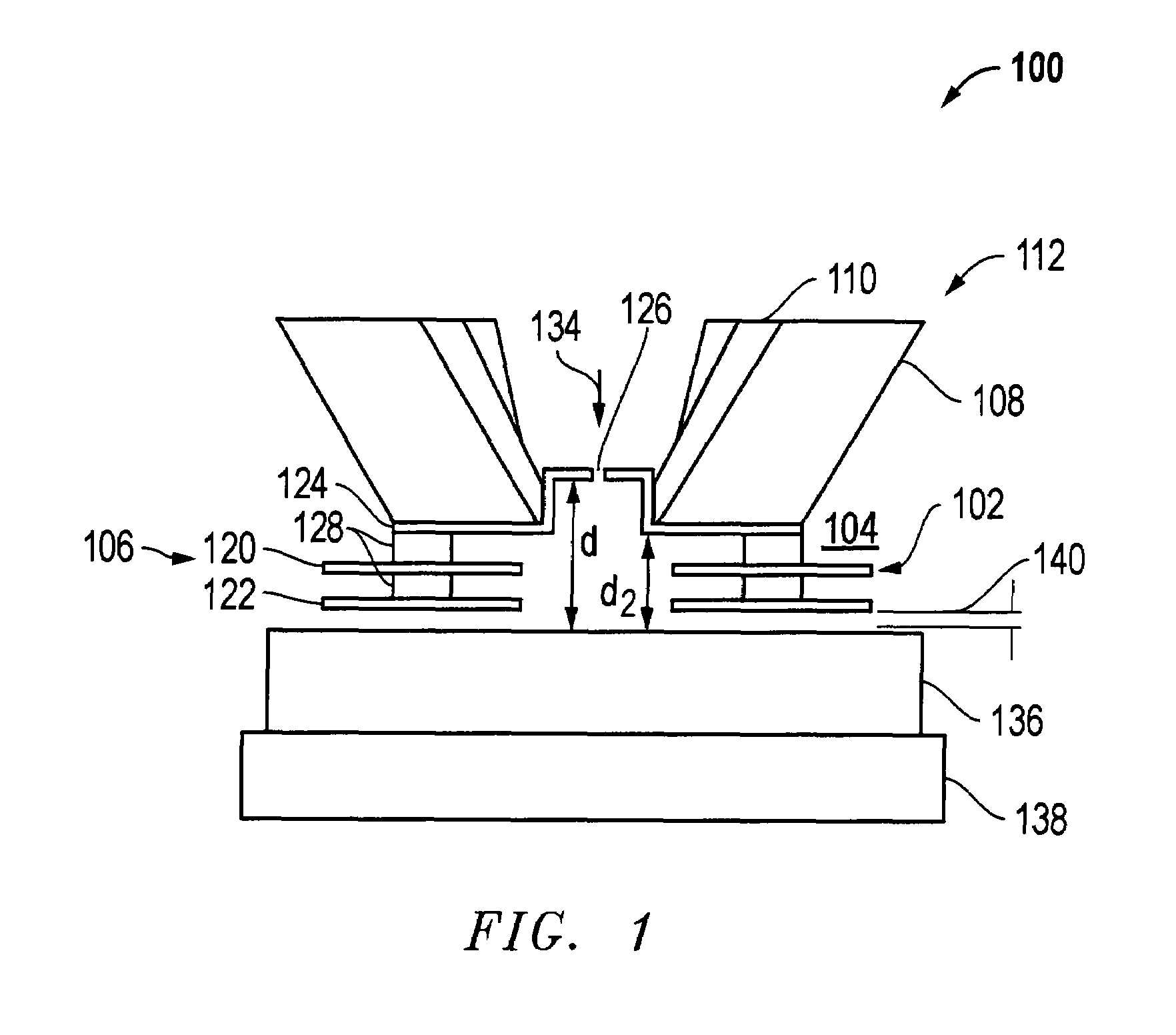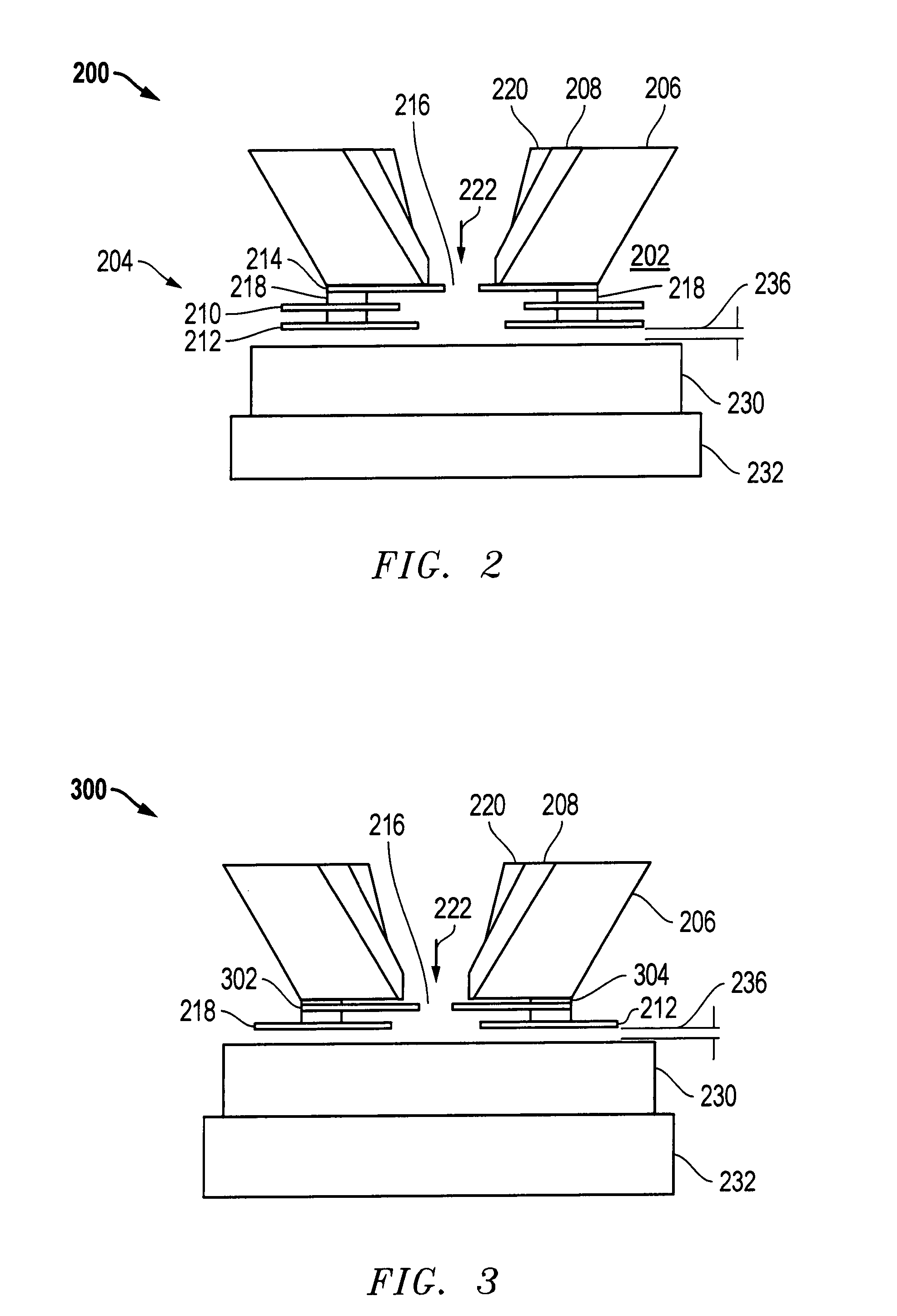Detector for charged particle beam instrument
a technology of charged particle and detector, which is applied in the field of electron microscope, can solve the problems of limiting the detector space, difficult to accommodate an in-lens pla within pole pieces having a 2 mm bore, and the configuration shown in fig. 1 is more difficult to implement in systems optimized for coincident electron and ion beams, so as to improve detection, increase the distance of secondary electron travel, and increase the number of collisions
- Summary
- Abstract
- Description
- Claims
- Application Information
AI Technical Summary
Benefits of technology
Problems solved by technology
Method used
Image
Examples
Embodiment Construction
[0027]Embodiments of the present invention increases the active detector space by extending the space available for electron motion through the PLA and into the pole piece, thereby increasing the effective detector space without increasing the working distance. Detector performance limitations imposed by the distance between the sample and the PLA are therefore eliminated. Because the detector space can be larger than the working distance, it is not necessary to have a large working distance to provide a sufficient detector space, and embodiments of the invention therefore permit a column design having a shorter working distance which improves resolution.
[0028]By increasing the efficiency of the gas amplification, embodiments of the invention permit operation at reduced pressures. In some embodiments of the present invention, the PLA diameter is increased compared to a typical PLA diameter of a prior art system, which allows more secondary electrons to pass through the PLA. An elect...
PUM
 Login to View More
Login to View More Abstract
Description
Claims
Application Information
 Login to View More
Login to View More - R&D
- Intellectual Property
- Life Sciences
- Materials
- Tech Scout
- Unparalleled Data Quality
- Higher Quality Content
- 60% Fewer Hallucinations
Browse by: Latest US Patents, China's latest patents, Technical Efficacy Thesaurus, Application Domain, Technology Topic, Popular Technical Reports.
© 2025 PatSnap. All rights reserved.Legal|Privacy policy|Modern Slavery Act Transparency Statement|Sitemap|About US| Contact US: help@patsnap.com



